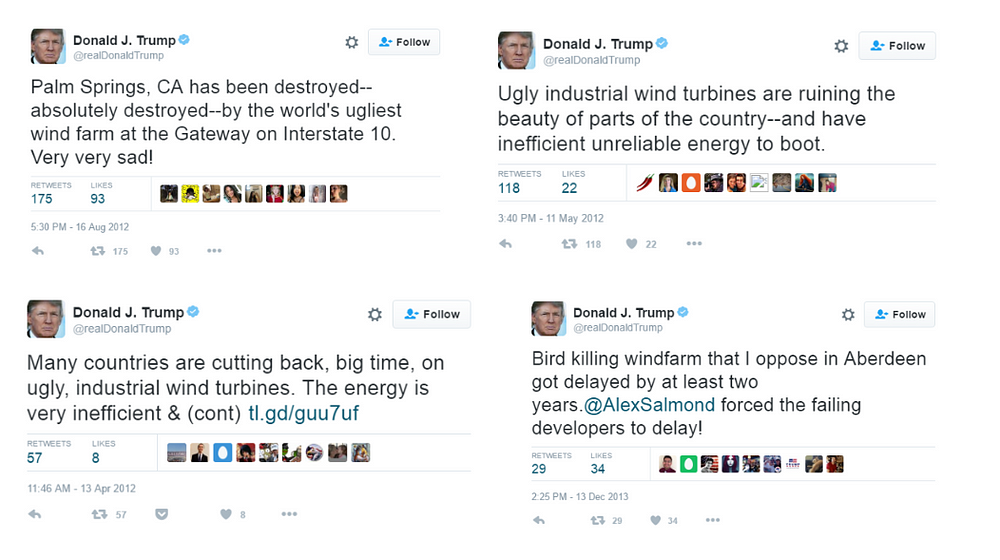Trump Bashes Wind Energy in a State That Gets a Third of its Electricity from Wind
 On Wednesday night, President Donald Trump held a rally in Cedar Rapids, Iowa, where he praised coal and ridiculed wind energy.
On Wednesday night, President Donald Trump held a rally in Cedar Rapids, Iowa, where he praised coal and ridiculed wind energy.
“I don’t want to just hope the wind blows to light up your homes,” Trump told the crowd.
Iowa is the leading producer of wind energy in the country and generated 36.6 percent of its electricity from wind in 2016. Statewide, the wind industry employs between 8,000 and 9,000 people and has added $11.8 billion to the state’s economy through capital investments. Wind farms that are built on private land, which is leased to wind developers, collectively earn farmers and landowners an estimated $20 million annually.
The mining industry in Iowa, by contrast, employs around 2,200 people — and is primarily made up of stone mining and quarrying jobs. Because of the way Iowa breaks down its employment data, that number also includes natural gas and petroleum extraction.
According to the Bureau of Labor Statistics, the wind industry currently employs more than 100,000 people in the United States, and wind turbine technician is the fastest growing occupation in the country. In 2016, wind capacity — the total amount of output a particular electricity generator can produce at a given time — passed hydropower to become the largest source of renewable energy capacity in the United States.
During his speech, Trump also made a reference to wind turbines killing birds, adding that “birds fall to the ground” when wind power is generated. This is not the first time Trump has claimed that wind power poses a serious threat to birds — in an interview with radio host and 2012 Republican presidential candidate Herman Cain in October, Trump said that wind power “kills all the birds” and that in areas with a lot of wind turbines, “thousands of birds are lying on the ground.”
Wind turbines do account for between 140,000 and 368,000 bird deaths annually. And while that might seem like a lot, it’s still well below the number killed each year by cell phone towers (6.8 million), collisions with glass buildings (one billion), and cats (3.7 billion).
And, as the Audubon Society notes, without wind power, birds face a much greater threat — climate change, which, by causing a shift in the habitable ranges for birds, could endanger nearly half of U.S. birds by the end of the century.
Trump has a longstanding grudge against wind power, stretching back to before his days in politics. As a developer, he fought plans to install a wind farm off the coast of one of his golf courses in Aberdeen, Scotland, which he argued would destroy the aesthetic value of his property. In 2012, he sent a letter to the then-head of the Scottish government where he called wind turbines “monsters” and described the wind farm project as “insanity.”

Trump’s struggle against the wind farm was ultimately unsuccessful — the Scottish government approved construction of the farm in 2013, and Trump’s attempts to derail the project were rejected twice in court.
Trump has not always taken such a hard line against wind power, however. During a campaign stop in Iowa early in the 2016 presidential election, he told voters that he supports subsidies for the wind industry, like the production tax credit.
“It’s an amazing thing when you think — you know, where they can, out of nowhere, out of the wind, they make energy,” Trump said.
As president, however, Trump has been far less supportive of the “amazing” power of wind and renewable energy. He appointed Daniel Simmons, a vocal critic of renewable energy, to lead the Energy Department’s Office of Energy Efficiency and Renewable Energy (EERE) and called for deep cuts to renewable energy research in his budget.
***
Reposted from Think Progress


